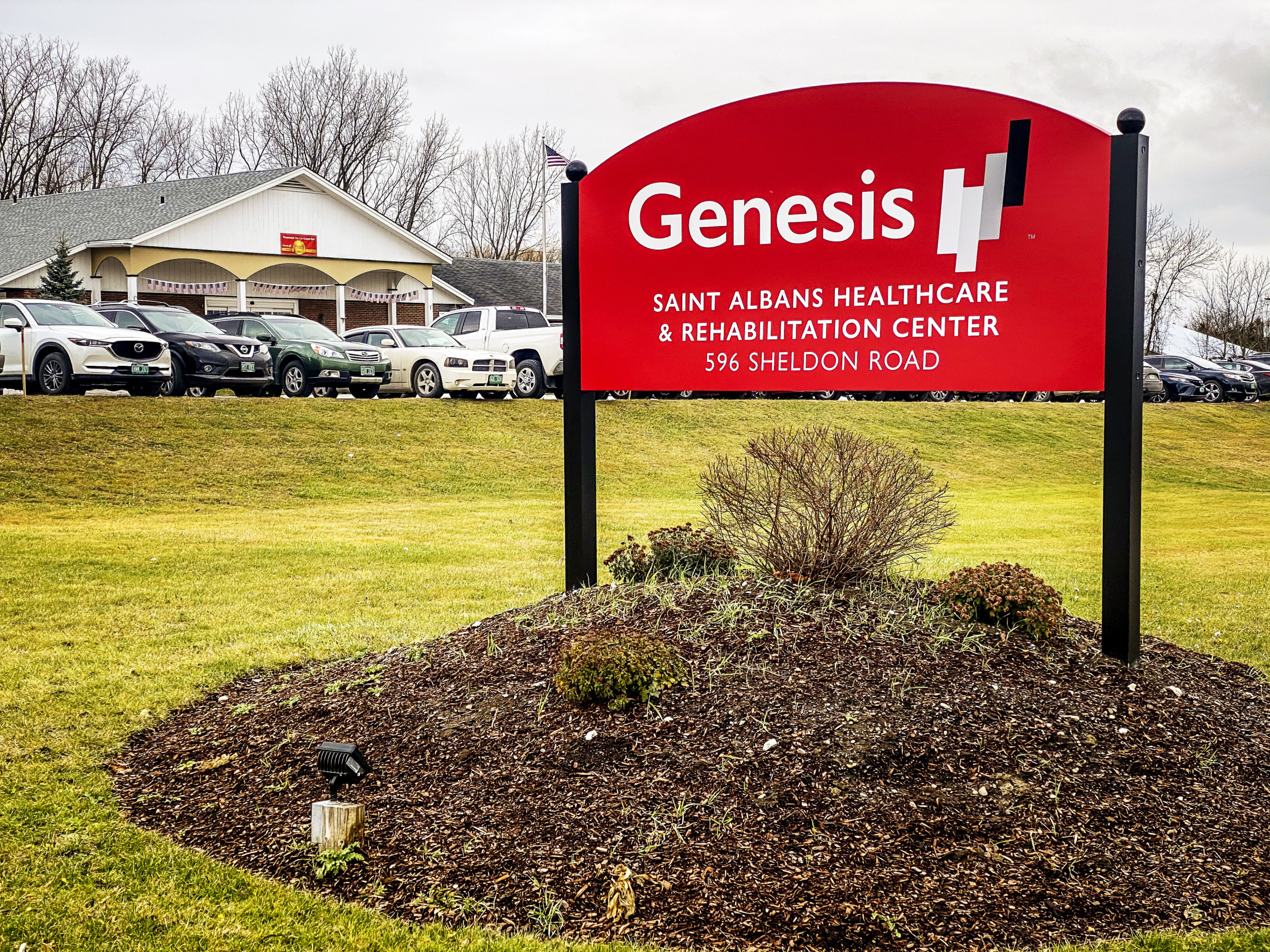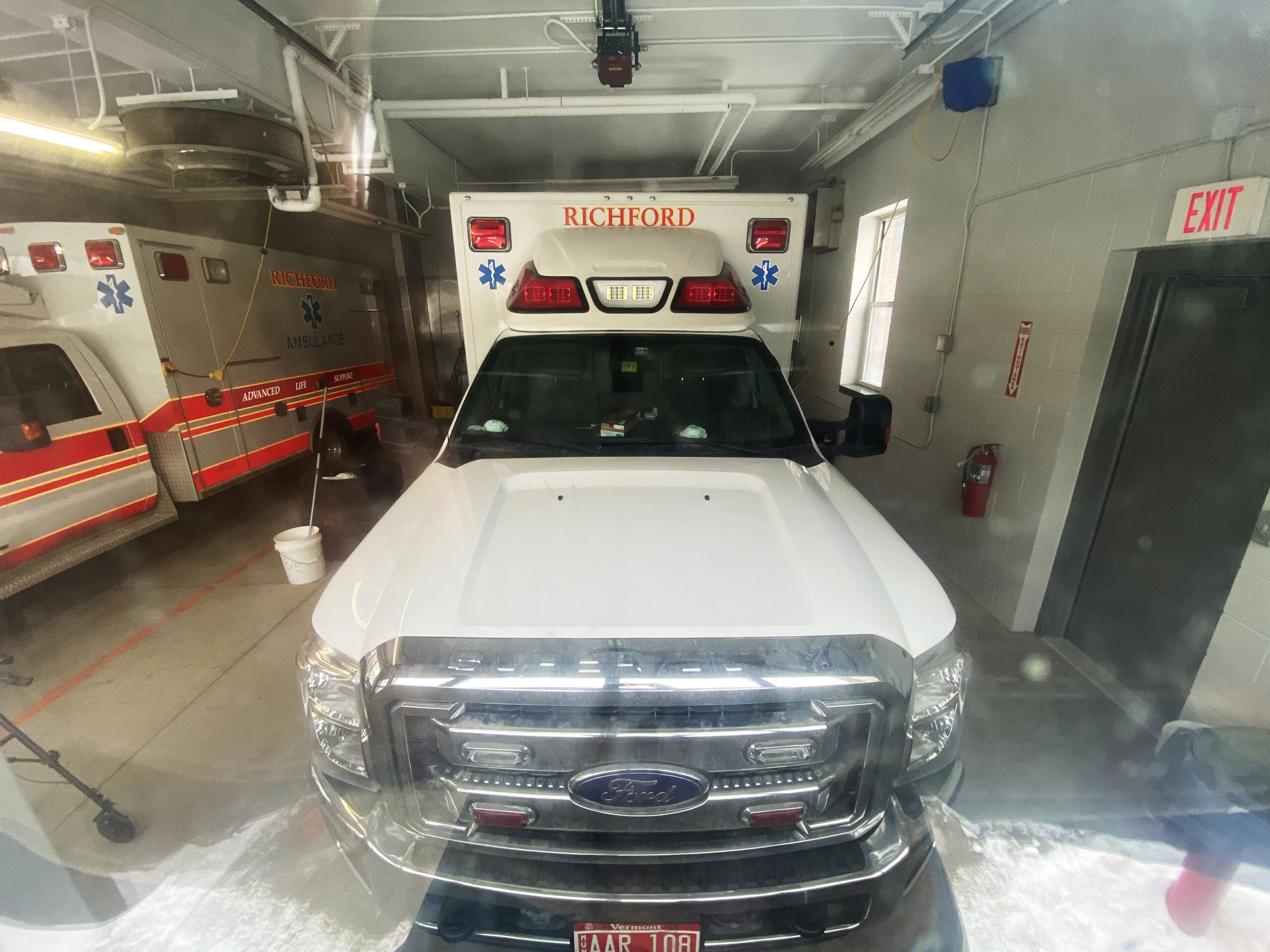HEATED DISCUSSIONS FILL RICHFORD WATER MEETING
By Gregory J. Lamoureux
County Courier
RICHFORD: About a hundred residents came out to listen to state experts and express their discontent with their view of the condition of Richford’s water.
Ben Montross, the compliance manager for Vermont’s drinking water program said what Richford is experiencing is not a new issue for the state, but it’s been more than a decade since Richford has seen an abnormally high test.
The issue comes from a test taken in May, indicating a high level of haloacetic acids within the drinking water, a substance the EPA has designated as a carcinogen if consumed at high levels for long periods of time.
The haloacetic acids within the water are a chemical byproduct of treating the drinking water with chlorine, a process used to kill any microorganisms that may be living in the water. Also in the water from time to time are micro-organic matter such as small bits of leaves and grass that mix with the chlorine, ultimately producing small amounts of haloacetic acids.
It takes a bit of time for the haloacetic acids to develop after chlorine and organic matter mix. This means that in Richford’s drinking supply, the water that is coming out of the tap at someone’s house far away from the water supply could actually have a higher level than the water leaving the treatment facility.
That’s why the tests are taken at taps throughout the town, at actual water consumer’s properties.
The May 2018 test, registered at 0.118 mg/L, putting the four-quarter average for Richford’s water above the government’s high limit of 0.060 mg/L. Officials warned that the high test will stay in their calculation for the next three quarters, so having a high average through May of 2019 should not be alarming.
Although the test is only conducted once every three months, it is merely a snapshot in time, showing the level in the water that day. This can be deceiving as the levels in the water can fluctuate significantly from day to day.
It is suspected that the test in May was conducted relatively close to a weather event that would have given a higher reading. According to Amy Galford, compliance analyst at the VT Department of Environmental Conservation, said warmer weather and high rainfall are typical causes for a high test.
Instead, it is likely that the levels of haloacetic acid within the water supply was on the rise for four or five days before the test and began to fall for four or five days after the test, according to Galford.
That being said, Galford was unable to point to a specific storm that could have caused the higher levels, so it is possible that the test was taken on a day that the levels were still rising, or already falling, indicating that there could have been a higher level in the water supply at some point.
According to state officials, of the 410 municipal water supplies within the state, about 35 of them are engineered like Richford’s, they collect surface water and treat it. The remainder uses other methods, like wells, which has lower organic content than surface water, preventing haloacetic acids from having the chance of forming.
Several residents shouted and interrupted the presenters, obviously angered over what they perceived as a lack of urgency and concern by officials about the high registering test.
“Why should we be paying for water that could make us sick,” shouted one resident.
“We’re not the water operators,” Montross said, noting that they could take that up with the town. The Panel, from the state of Vermont, on Thursday, was there merely to inform the public about the health issues and answer questions in regard to those health concerns.
“I’ll take it up with the town about my water bill, but I just want to know how to protect my husband, kids, and yes my new puppy,” said resident Barb Beauregard.
Montross recommended purchasing an activated charcoal water filter for those who are concerned about their exposure, sold under many brands, but the most common of which is Britta.
Those filters will remove the haloacetic acids within the water, as well as a few other contaminants that could harm the drinker.
Click here to see more information on water filters, including numerous product reviews of filtration devices.
Ray Soloman, a Drinking Water and Groundwater expert with the state said Richford’s water supply is one of the better supplies in the state, in fact, he helped to engineer the project when it was built several decades ago.
The hurdle of adding an activated charcoal filter to the entire system is cost. Those filters are expensive and would have to be replaced on a regular basis, according to Montross.
Cost is also the primary barrier for sampling more often. At about $150 per sample, it would be costly to test more than once every three months, especially because the town sampes from multiple locations throughout the water supply to get a better indicator.
“You have to remember, 99% of the water you use is not used for drinking,” Soloman said, “it’s used for bathing, washing your clothes, etc.”
One resident posed the question to the panel, “If you lived here, would you drink the water?”
Soloman said yes, as did four of the five-panel members said yes, but one person, Sarah Vose, a Toxicologist for the State of Vermont said she would not, instead she would drink bottled water, as she does on a regular basis now.
“But, that’s a question you have to decide for yourself,” Vose said.
According to Vose, the likelihood of contracting cancer from your water is around 1 in 100,000.
“You’re more apt to get cancer from environmental issues you can control,” Vose said, “like smoking, obesity, and lack of exercise.”
Ultimately, the water in the system is largely safe. That was the message from Montross. Unless you have a compromised immune system, elderly, pregnant, or a toddler, it is likely you will not sustain any health complications from drinking Richford’s water.
A test conducted on July 20th just came back, according to state officials, indicating that the levels of haloacetic acids were in the 0.030-0.038 mg/L range, well below the federal guidelines, but those tests were not conducted in the interval required for testing every three months, so they will not be calculated into the average.
Instead, officials will be testing the water in the coming weeks, averaging that new number with the last three quarters.
Montross stressed that residents should look more at the number for each test for the next three quarters, and not the average because the average will be skewed by May’s high test.
Officials were clear to point out that unlike contaminants found in well water in the southern part of the state two years ago, this water condition is unlikely to affect other water supplies throughout the Richford area.





